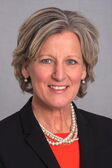
After a year of change at York Hospital, new CEO gets to work
 Courtesy / York Hospital
York Hospital, whose main building in York Village is shown here, has a new president and CEO, Dr. Patrick Taylor.
Courtesy / York Hospital
York Hospital, whose main building in York Village is shown here, has a new president and CEO, Dr. Patrick Taylor.
A new president and CEO starts work Monday at York Hospital, filling a void that began the same time as another challenge for the 79-bed acute health care facility — the onset of COVID-19.
Dr. Patrick Taylor succeeds Jud Knox, who ended his 38-year career at the hospital March 13, 2020. Maine had recorded its first case of COVID-19 the previous day.

The hospital didn’t disclose the reason for his departure, and at the time a spokeswoman said publicly that it was the result of a “mutually agreed upon decision.”
Chief Financial and Operations Officer Robin Labonte and Chief Medical and Quality Officer Dr. Jennifer Cutts were named joint interim CEOs until the hospital hired a replacement. With Taylor’s hiring, they will now return to their previous roles.
Taylor, a board-certified emergency medicine physician, also found himself taking on new roles in the early days of the pandemic.
In October 2019, he resigned as president and CEO of Holy Cross Hospital, a 557-bed academic medical center in Fort Lauderdale, Fla. He had served in that position since 2010 and held others at Holy Cross since 1988.
“I was going to take a pause, then look for the next opportunity,” he said in a recent interview with Mainebiz. “It was a difficult decision at the time, because I loved the community and the hospital. However, it was the right time personally and professionally.”
But then COVID-19 hit. At the urging of a hospital board member, Taylor returned to work, serving now as a consultant to Catholic Health Services, a group of 38 long-term care facilities in south Florida.
As nursing homes reeled from the first wave of the pandemic, Taylor was on the front lines, working as part of Catholic Health’s Emergency Incident Command Team and helping guide the provider through the crisis.
Last fall, he took on an additional consulting role, serving as U.S. medical director for the COVID Therapeutics Team of GlaxoSmithKline plc (NYSE: GSK), a British multinational pharmaceutical company.
“Then the York Hospital opportunity came up,” Taylor said. “You never know where things are going to take you.”
Maine connection
York Hospital is 1,500 miles from Fort Lauderdale, and Taylor’s education also is wide-spanning. He earned his M.D. at Duke University School of Medicine and received a bachelor’s degree from the University of Notre Dame. He also holds an MBA from Florida Atlantic University.
Still, Taylor says he has long felt a connection to New England and to Maine.
His medical training included a stint at Tufts University in Massachusetts, and one of his two daughters — both are physicians — is about to begin a fellowship at Boston Children’s Hospital. Taylor also has vacationed in southern Maine with family and friends.
“It became a community I really fell in love with,” Taylor said.
While York and Holy Cross hospitals differ greatly in geography and size, he sees a common denominator.
“Medicine at its core is still about a one-to-one relationship,” he said. “I understand what it means to have that relationship, and at the end of the day that’s one of the most important things there is.
“So I don’t see [the differences] as daunting. Maybe just a good challenge.”
In fact, Taylor said, the small size of York Hospital has benefits for a practicing physician.
“There are lots of advantages to being in a community setting, where you really are part of the community, part of the mosaic. It gives you a much better understanding of patients.
“I came into the profession as an emergency medicine doctor, and even though I’ve had this wonderful transition into administration, I’m still board-certified and able to work in the ER.”
Mixed prognosis
At York Hospital, Taylor will face a mix of pressing clinical and operational priorities, including demands created by the pandemic.
Last summer, the hospital became a “gateway” site for COVID-19 testing as travel restrictions in Maine were eased. The central campus of the hospital, in York Village, is less than 10 miles from the New Hampshire border, and there are a half dozen satellite facilities throughout York County. The hospital administered more than 37,000 COVID-19 tests, allowing visitors to access hotels and restaurants and allowing residents to return to school and work.
But York Hospital also has had to deal with the effects of the pandemic first-hand. In December an outbreak infected 59 hospital employees and patients.
More recently, York has begun COVID-19 vaccinations, aiming to provide 500 inoculations a day. “Our goal is to get as many people vaccinated as possible,” Taylor said. “That’s our best way out of this crisis.”
He also wants to encourage patients who have avoided medical care during the pandemic to return.
“A lot of people have put off their care, especially preventive care, and in the long run that’s not a good thing,” Taylor said. “We know how to do things safely now. It’s very important to make sure people get back to those preventive services. Our doors are open.”
Getting more patients in the doors could also help the hospital address ongoing financial challenges.
In January, York announced it was postponing pay raises for employees in an effort to control expenses. Labonte told a New Hampshire newspaper the hospital had an operating loss of more than $7 million in 2019, and that the pandemic had only made things worse.
York reported revenue of $189 million in 2018, according to tax records.
“A lot of the work to get the hospital back on a stronger financial footing is already underway,” Taylor said. “We’ll focus on areas of growth where we can continue to attract patients and physicians, where we can grow to meet community needs and also be sustainable.”
That work will include examining the billing and reimbursement functions, “to make sure we’re getting everything the hospital is due, from the front end to the back end.” York may also look at ways to increase operational efficiencies and to economize in its supply chain, Taylor said.
Many community hospitals have dealt with economic pressures by consolidating into larger hospital networks. Last year, for example, Mayo Regional Hospital became part of Northern Light Health, Maine's second-largest health care system.
Taylor acknowledged the role of such big players.
“We’re fully aware of the larger systems that surround York Hospital,” he said. “We ‘re looking for ways to effectively serve the community and also compete in that environment.”
Forming new relationships with larger providers “is an area where there will certainly be a lot of discussion. Are there ways in which we can have successful partnerships, that are a win-win?”
Answers to questions like that may have to wait for now, however. Taylor is busy settling into his new role and his new home in Cape Neddick. And he’s satisfied with what York is already doing.
“The major health systems are talking about patient-centered care, about going beyond the hospital walls,” he said. “But in all those ways, York Hospital is already so far ahead. It’s a hidden gem.”
Mainebiz web partners
Wow














1 Comments